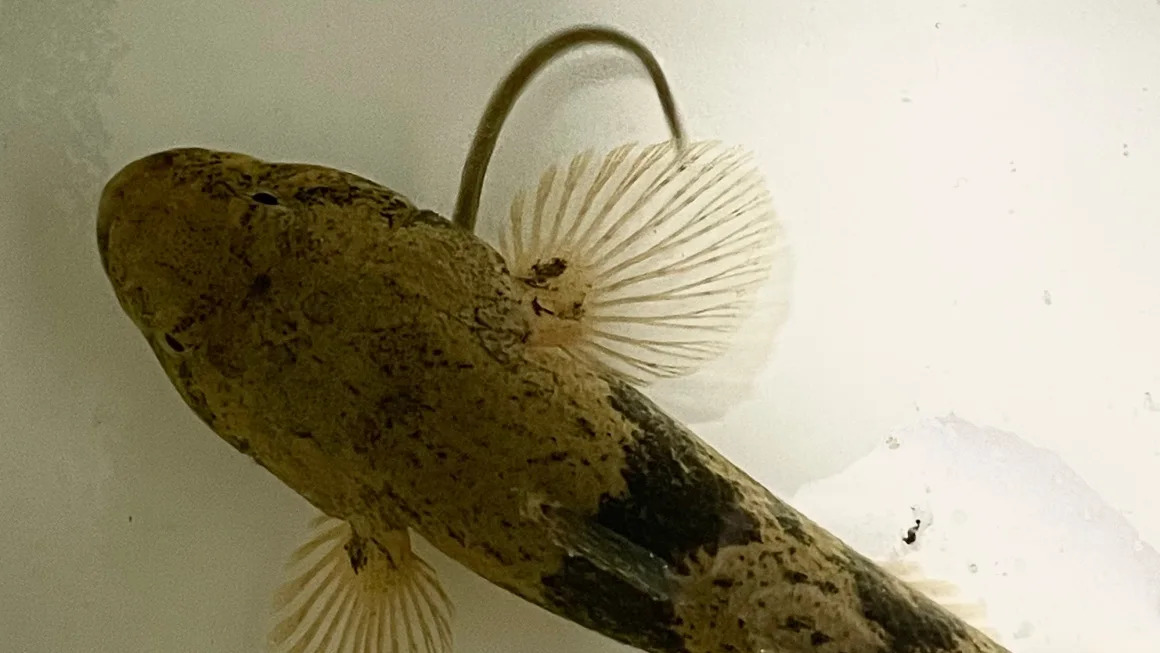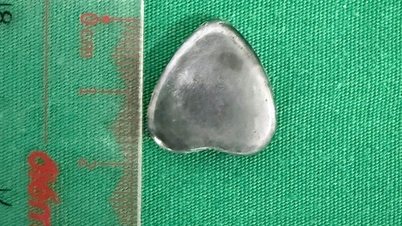Specifically, researchers discovered that after being swallowed by the goby fish Odontobutis obscura, baby Japanese eels (Anguilla japonica) wriggled out of the stomach through the digestive tract and swam through the fish's gills, escaping.
Researchers used X-ray video to capture the eel's daring escape, describing their findings in a study published earlier this week in the journal Current Biology.

After being swallowed alive, a Japanese eel escaped a goby through the predator's gills. Photo: Yuha Hasegawa
"Before recording the first X-ray footage, we never thought that eels could escape from the stomach of a predatory fish," said Yuha Hasegawa, lead author of the study at Nagasaki University in Japan.
"We were absolutely amazed to see the eel desperately escaping the predator's stomach, then swimming up to the fish's gills."
To escape the goby's intestines, the eel will insert its tail into the fish's esophagus and turn upside down. To escape the stomach, the eel will stick its tail out of the fish's gills and writhe, dragging the rest of its body with it. On average, it takes about three and a half minutes for an eel to escape after being swallowed.
“The X-ray footage of the eels swimming around in fish stomachs trying to find their way out is particularly impressive, and shows that for some prey, the fight for survival isn’t over even after being eaten,” said ichthyologist Kory Evans, associate professor of biological sciences at Rice University in Houston. “It’s really inspiring.”
While this escape behavior has so far only been documented in juvenile Japanese eels, the study authors say larger, more muscular eels, which can tolerate the acidic, oxygen-poor environment in their stomachs, may still have a survival rate after being swallowed, but more research is needed to know for sure.
Ngoc Anh (according to CNN)
Source: https://www.congluan.vn/phat-hien-loai-vat-van-co-the-song-song-sot-va-tron-thoat-sau-khi-bi-an-thit-post312378.html


![[Photo] Nhan Dan Newspaper displays and solicits comments on the Draft Documents of the 14th National Party Congress](https://vphoto.vietnam.vn/thumb/1200x675/vietnam/resource/IMAGE/2025/10/26/1761470328996_ndo_br_bao-long-171-8916-jpg.webp)


![[Photo] General Secretary To Lam received the delegation attending the international conference on Vietnam studies](https://vphoto.vietnam.vn/thumb/1200x675/vietnam/resource/IMAGE/2025/10/26/1761456527874_a1-bnd-5260-7947-jpg.webp)
![[Photo] Prime Minister Pham Minh Chinh attends the opening of the 47th ASEAN Summit](https://vphoto.vietnam.vn/thumb/1200x675/vietnam/resource/IMAGE/2025/10/26/1761452925332_c2a-jpg.webp)
![[Photo] Enjoy the Liuyang Fireworks Festival in Hunan, China](https://vphoto.vietnam.vn/thumb/1200x675/vietnam/resource/IMAGE/2025/10/26/1761463428882_ndo_br_02-1-my-1-jpg.webp)





































































































Comment (0)